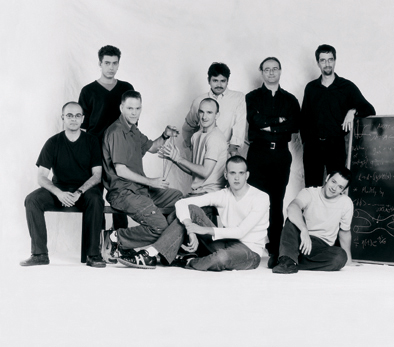Are you a journalist? Please sign up here for our press releases
Subscribe to our monthly newsletter:

An exciting and frightening idea has occupied human thought for thousands of years. It vibrated in the mind of Democritus, the 5th century BCE philosopher, who conceived the idea of an atom as a basic, indivisible unit of matter; it took on a new shape in the thinking of Giordano Bruno - philosopher, scientist and poet - who at the end of the 16th century formulated a speculative atomic theory; and it assumed a scientific, mathematical shape when John Dalton published his writings in 1808, giving rise to modern atomic theory.
All these were attempts to answer the biggest question of all: What is matter? What makes up the suns, comets, humans, grains of sand on the beach… the universe? When Dalton discovered that atoms did in fact exist, it seemed for a moment that this mystery had been solved. But then it turned out that the “indivisible” atoms were made up of a “zoo” of subatomic particles, and the issue was yet again shrouded in uncertainty.
Physicists are striving to show that all known particles are the product of an ancient component, which they’ve dubbed a “string,” and that all the forces of nature are none other than different aspects of this primordial force. String vibrations, according to this theory, ruled the universe in the first few fractions of a second after the Big Bang. But demonstrating their existence has proven tricky, since it is impossible to reconstruct the conditions existing in those fateful fractions of time.
Profs. Ofer Aharony and Micha Berkooz of the Weizmann Institute’s Particle Physics Department are among those working to prove the existence of strings. They hope to show that all particles of matter are created as a result of these strings, vibrating in their lowest harmonic modes. In other words: our physical reality is “music” played by strings. The problem is that this theory can be true only on condition that our universe has eleven dimensions, of which we have so far managed to reveal only four. Does reality have more dimensions than can be seen by the eye? The hunt for these dimensions continues.
If the theory advanced by Aharony and Berkooz proves true, major new mysteries will turn up. In the world of strings, for example, universes might be governed by different laws of physics - with each universe played in a different musical scale. What happens in these universes? What are their governing laws? Physics, it seems, is very aptly referred to as “a science that never ends.”
Prof. Aharony is the incumbent of the Joseph and Celia Reskin Career Development Chair. Prof. Berkooz's research is supported by Mr. and Mrs. Harold Blumenstein, Bloomfield hills, NY. He is the incumbent of the Recanati Career Development Chair of Energy Research.